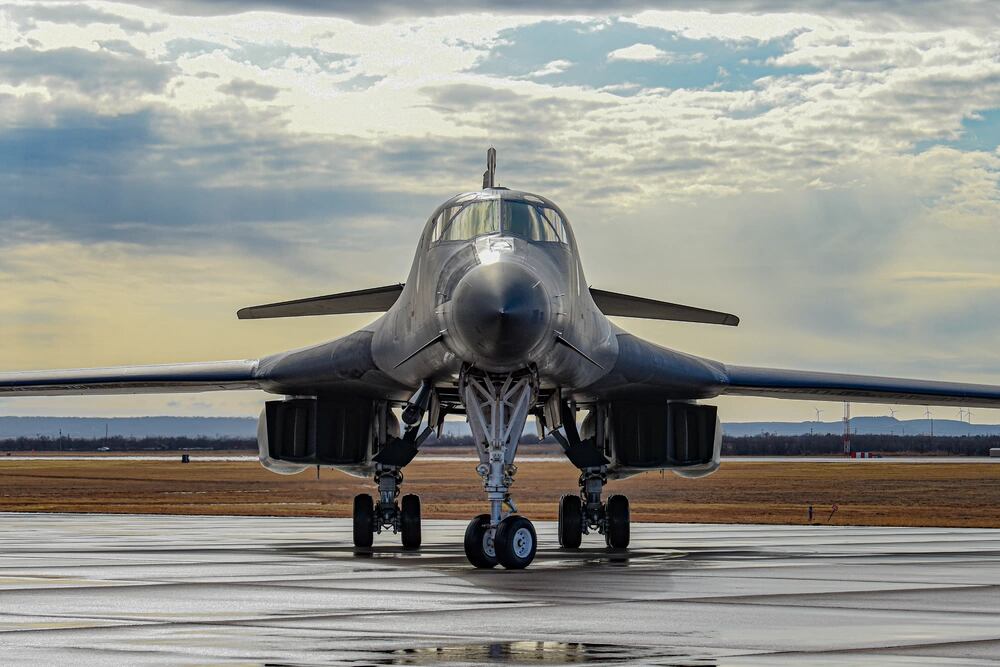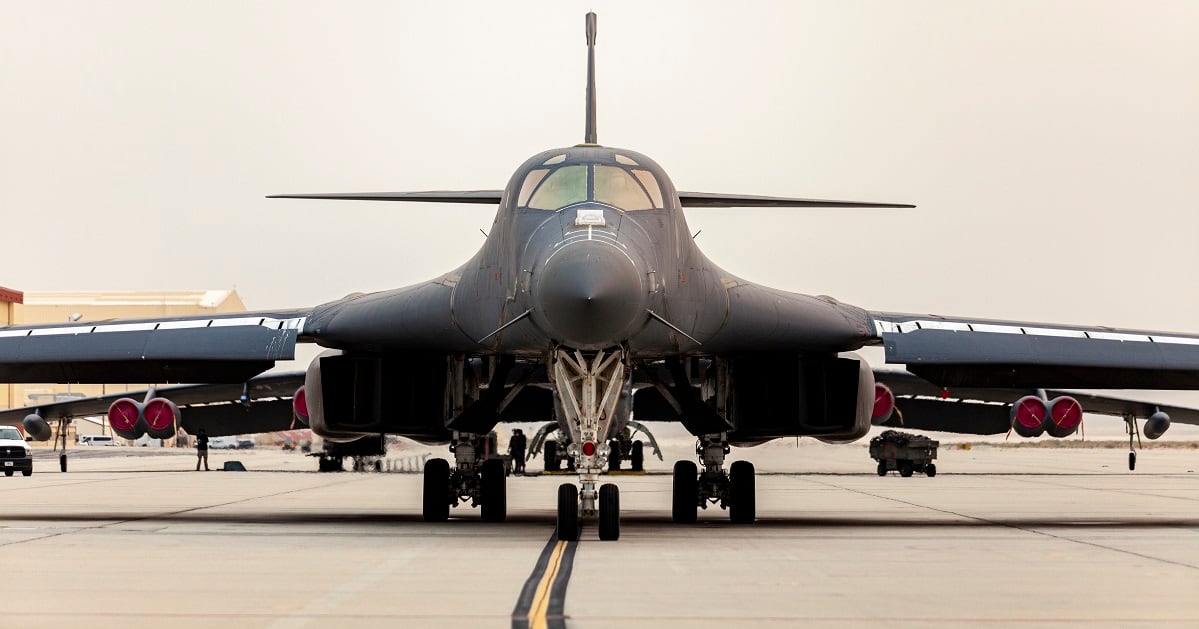American B-1B Lancer bombers have returned to Guam for another training stint in the Indo-Pacific.
It’s the long-range bomber’s second deployment to Andersen Air Force Base, Guam, this year. Aircraft and crews arrived Tuesday from the 28th Bomb Wing at Ellsworth AFB, South Dakota, the Air Force said in a Thursday news release. It did not disclose how many jets are part of the rotation.
The tasking comes as North Korea has fired the most missiles in one year since its leader Kim Jong Un took power in 2011 — including a ballistic missile over Japan on Oct. 3 — and amid ongoing worries that China may invade Taiwan. China has also pledged solidarity with Russian President Vladimir Putin in his eight-month war on Ukraine.
RELATED

Bomber crews will participate in several training missions with regional allies while overseas.
“Our maintenance professionals will be responsible for preparing, maintaining and launching B-1s for long-duration missions,” Lt. Col. Daniel Mount, 37th Bomb Squadron director of operations, said in the release.
“Our support personnel will be ensuring that our logistics beddown, cargo, planning networks, flight records and medical requirements run seamlessly,” he added. “Our aircrew will fly and integrate across several multinational exercises to sharpen their warfighting skills specific to the region.”
Lancers can carry 75,000 pounds of conventional weapons, the largest payload of any Air Force plane, and enough gas to travel between continents without refueling. They do not fly with nuclear weapons.
The Air Force has been practicing more responsive, flexible wartime tactics as it learns to overcome the unique challenges to military operations in the Indo-Pacific — namely, its vast geography and lack of established American infrastructure.
Earlier this year, four B-1s deployed to Andersen to practice combat coordination with the Japanese military, as well as the bomber’s first quick-turn refueling with the Australians.
The Lancer’s presence in the region sharpens airmen’s skills but also plays an important messaging role for local partners and aggressors.
“It … signals our nation’s unwavering support [of U.S. allies in the Indo-Pacific],” 28th Bomb Wing commander Col. Joseph Sheffield said in the release. “[Bomber task forces] like this one play a critical role in deterring potential adversaries and challenging their decision calculus.”
RELATED

The Air Force now rotates its bombers on deployments around the world rather than relying on long-term postings in one spot. It argues that approach keeps adversaries on their toes and lessens risk to airmen.
Still, the service is in the process of retiring the B-1 fleet after decades of hard flying against entrenched extremist groups across U.S. Central Command. The nuclear-capable, stealth B-21 Raider will replace the B-1 and B-2 Spirit in the bomber inventory in the next two decades.
The Air Force retired 17 of its oldest, most beaten-up Lancers last year, leaving airmen with about 45 jets.
Rachel Cohen is the editor of Air Force Times. She joined the publication as its senior reporter in March 2021. Her work has appeared in the Washington Post, the Frederick News-Post (Md.), Air and Space Forces Magazine, Inside Defense, Inside Health Policy and elsewhere.




